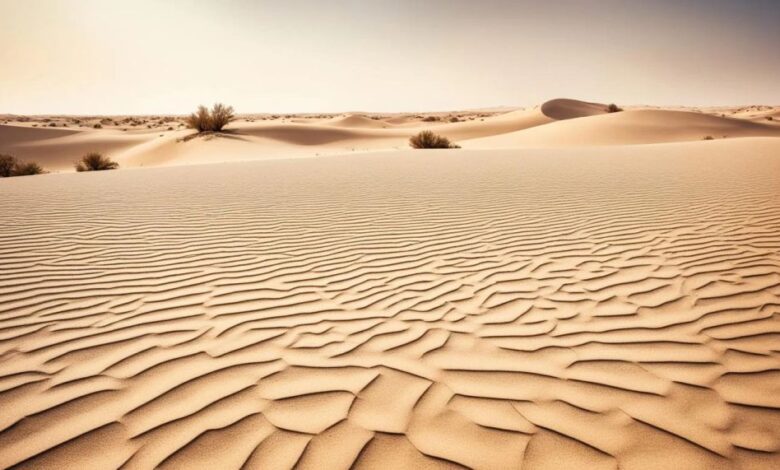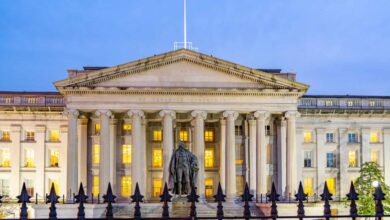Biodiversity loss a threat to sustainable societies

The Times Kuwait Report
Global biodiversity loss is part of the triple planetary crisis facing the world today; the other two being climate change and pollution. Loss of biological diversity, estimated to be tens of thousands of times higher than naturally occurring extinction, is far more today than at any other time in human history. Unless compelling mitigatory measures are implemented, loss of biodiversity could very well drive the next mass extinction.
Biodiversity is defined as the variety of life on Earth, in all its forms, from the diversity in genes and bacteria to the diverse array of plants, animals and microorganisms that interact with each other and their surroundings, such as in a tiny pool of water, a vast desert, or other ecosystems. The biodiversity we see around us is the result of billions of years of evolution, but increasingly this diversity is being influenced by humans.
The impact of human-centric activities including land-use change, especially for economic activities, transform the natural landscape destroying or damaging natural habitats and food resources of plant and animal species. Human encroachments and exploits of nature could trigger the extinction of entire species. United Nations agencies estimate that up to one million species are threatened with extinction, many within the coming decades.
Biodiversity is also increasingly being impacted by climate change. Although biodiversity forms a natural bulwark against global warming and climate change — with.land and marine environments absorbing more than half of all carbon emissions — the continued burning of fossil fuels, rising global temperatures, widespread droughts and floods, and climatic aberrations are threatening the planet’s biological diversity.
Despite all of humanity’s technological advances in various fields, there is no denying that we are still totally dependent on a healthy and vibrant biodiversity for our sustenance and survival. International Day for Biological Diversity, observed each year on 22 May, recognizes this dependence, and the need to reexamine our relationship with the natural world.
International Biological Diversity Day also helps raise awareness on the importance of preserving and protecting the world’s biological wealth and sustaining the diversity of its ecosystems. Protecting all ecosystems is vital as they are often inter-related in unexpected ways — minerals found in the 22,000 tons of dust carried annually by wind from the Sahara Desert helps fertilize the Amazon Rainforest, which plays a critical role in global water and carbon cycles.
In Kuwait, the Environment Public Authority (EPA) spearheads strategies and activities pertaining to biodiversity and environmental challenges. In a report on biodiversity, the EPA noted that negative impacts on the country’s limited biodiversity are not only increasing rapidly, they are also occurring on such a wide scale that they impede sustainable development and livelihoods of people.
Considering Kuwait’s sparse biodiversity, it is imperative that the meager, but highly adapted biodiversity in the country be protected and sustained. Besides a minimal wildlife population, natural vegetation in the country is also limited to shrubs, herbs and perennials, the growth of which vary seasonally depending on winter rainfall. The vegetation that exists in the desert is especially important as it protects the soil from erosion and forms a food source for livestock species and wild animals.
The desert landscape in Kuwait has also deteriorated significantly in recent decades, mainly due to human activities, including through overgrazing, uprooting of existing vegetation, camping and entertainment sites, presence of legal and illegal quarries, and increasing desertification. Lack of appropriate laws and inadequate implementation of existing regulations to protect and preserve biodiversity have also contributed to land degradation and biodiversity loss.
Other major threats to Kuwait’s biodiversity comes from the country’s relatively small land and sea area, which has created a high demand for suitable areas to develop residential, industrial and tourism sites. In addition, infrastructure development, urban expansions, and military exercises, as well as oil production, transport and storage, have encroached on previously untrammeled areas destroying or damaging biodiversity there.
Moreover, ongoing plans and projects to build artificial islands and tourism venues, especially in intertidal and muddy areas, could destroy various habitats that host an array of biological lifeforms. These areas not only serve as breeding and feeding grounds for many marine species, they are also a sanctuary for various birds, including migratory birds that make a stopover here during their annual migration.
Likewise, although a variety of flora and fauna are found in the territorial waters around Kuwait, they are increasingly being harmed by pollution, overfishing, higher temperatures, and an increase in salinity from desalination plants along the coast, Compounding the harm to marine biodiversity are chemical pollutants and oil slicks that sink down and damage coral reefs, as well as amateur fishermen who fish in breeding areas, and anchor their boats on coral reefs.
Despite the threats to its biodiversity, Kuwait has been making significant efforts to revive and rejuvenate the various ecosystems and improve biological diversity in the country. Since its establishment in 1995, the Environment Public Authority (EPA) has introduced regulations and implemented policies aimed at protecting and preserving the environment and its biodiversity. In 1998, the EPA drew up the ‘National Strategy for Biodiversity’ and began executing its various provisions.
The biodiversity strategy calls for establishing natural reserves around the country, developing an environmental impact assessment system, and raising environmental awareness among the public. The strategy also authorizes EPA ro draw up policies with regard to the environment, as well as to regularly monitor the land and marine ecosystems,enforce regulations and laws, and implement plans aimed at safeguarding biodiversity.
However, effective implementation of the national biodiversity strategy has been hindered by, among others, the lack of coordination mechanisms between government agencies and civil society organizations involved in environmental affairs; an acute shortage of specialists and technical capacities to manage various aspects of biodiversity; the absence of adequate legislations; and the failure to adopt necessary budgets to execute policies and action plans.
Moreover, the multiplicity of public and private entities involved in environmental issues leads to an overlap in institutional policies, programs, legislation, and activities. Besides EPA, other entities associated with biodiversity include the Public Authority for Agriculture Affairs and Fish Resources, Kuwait University, Kuwait Institute for Scientific Research, Environment Protection Society (NGO), and the Voluntary Work Centre in Kuwait (NGO).
To streamline environmental operations and improve institutional efficiencies, policy-makers will have to encourage better collaboration between government departments, the scientific community, the private sector and the public. The authorities will also need to institute and implement appropriate legislation and regulations to protect and conserve biodiversity, and introduce economic and social incentives for biodiversity conservation and revitalizing activities.
In addition, the government has to make good on their proposed plan to set aside 20 percent of Kuwait’s total area for land and marine nature reserves. Existing main nature reserves at Sabah Al-Ahmad, Al-Qurain, Al-Sulaibikhat, Al-Nuwaiseeb, and Mubarak Al-Kabir, as well as smaller terrestrial and inland waters protected areas, together account for less than 12 percent of the country’s total area.
In line with the theme of this year’s International Day of Biodiversity — ‘Be Part of the Plan’ — the government, non-governmental organizations, businesses, and individuals have to join hands to conserve and rejuvenate Kuwait’s biodiversity. Achieving this will require everyone to become more aware of the nation’s biological diversity, and how their lifestyles and high levels of consumption are negatively impacting the environment and its biological resources.
We need to keep in mind that challenges to biodiversity raises challenges for the planet; unless we preserve our biodiversity the sustenance and sustainability of all species on Earth is at peril.













